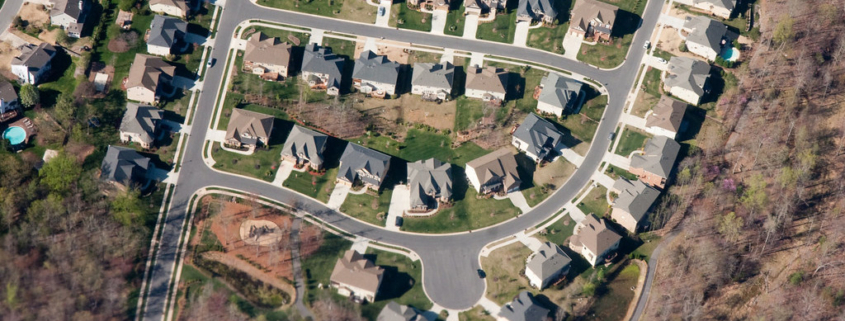The Good Life, Just Beyond
Radical Suburbs: Experimental Living on the Fringes of the American City, by Amanda Kolson Hurley (Belt Publishing, 160 pp., $16.96)
If forced to compare an ice cream flavor with suburbia, many would pick vanilla. Yet, as Amanda Kolson Hurley writes in her new book, Radical Suburbs: Experimental Living on the Fringes of the American City, this is just one of many “misinformed clichés” about these peripheral communities. City-dwellers internalized these attitudes early on. In the early 1950s, novelist Raymond Chandler spoke for many urbanites when he disdained suburban life for its “eight-room house, two cars in the garage, chicken every Sunday and the Reader’s Digest on the living room table, the wife with a cast-iron permanent and me with a brain like a sack of Portland cement.”
“You take it, friend,” he declared. “I’ll take the big sordid dirty crooked city.”
Distaste for suburbia persists, with New Urbanist gurus like Andrés Duany describing suburbanized cities, such as Phoenix, as places “where civic life has almost ceased to exist,” though he offers no real evidence to back up this assertion. Social critic James Howard Kunstler goes even further, suggesting that the “state-of-the-art mega-suburbs of recent decades have produced horrendous levels of alienation, anomie, anxiety, and depression.”
Yet, as Hurley fortunately reminds us, the suburbs actually have a long, and in many cases quirky, history. In her study of six suburban developments, she shows how these communities emerged outside cities not as unglamorous places generating profits, but as oases from urban stress, with utopian goals.
Read the entire article at City Journal.
Joel Kotkin is the Roger Hobbs Distinguished Fellow in Urban Studies at Chapman University and executive director of the Houston-based Center for Opportunity Urbanism. He authored The Human City: Urbanism for the rest of us, published in 2016 by Agate. He is also author of The New Class Conflict, The City: A Global History, and The Next Hundred Million: America in 2050. He is executive director of NewGeography.com and lives in Orange County, CA.
Photo credit: Nathan Rupert, via Flickr, using CC 2.0 License.



